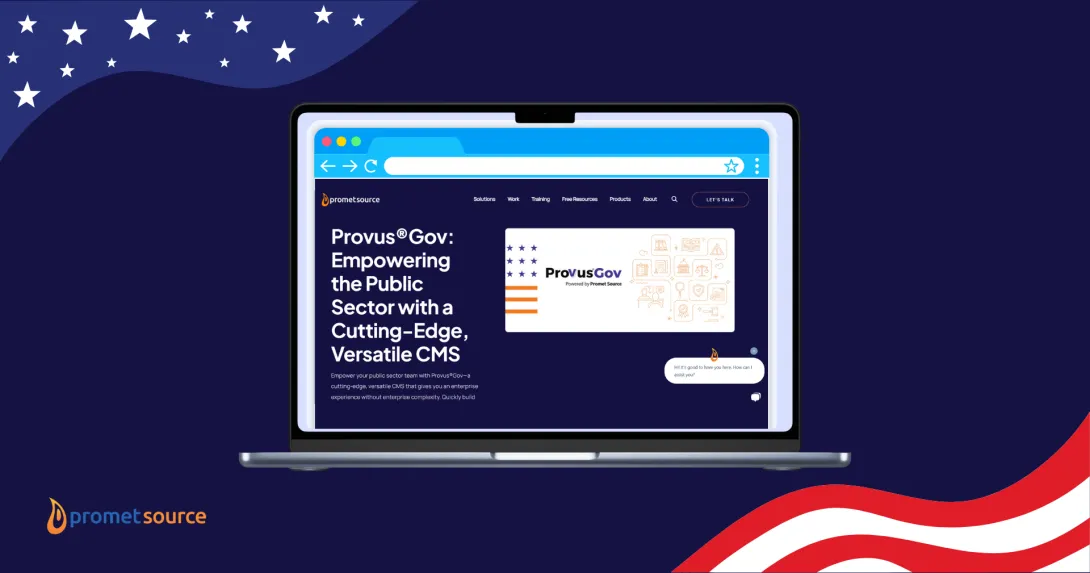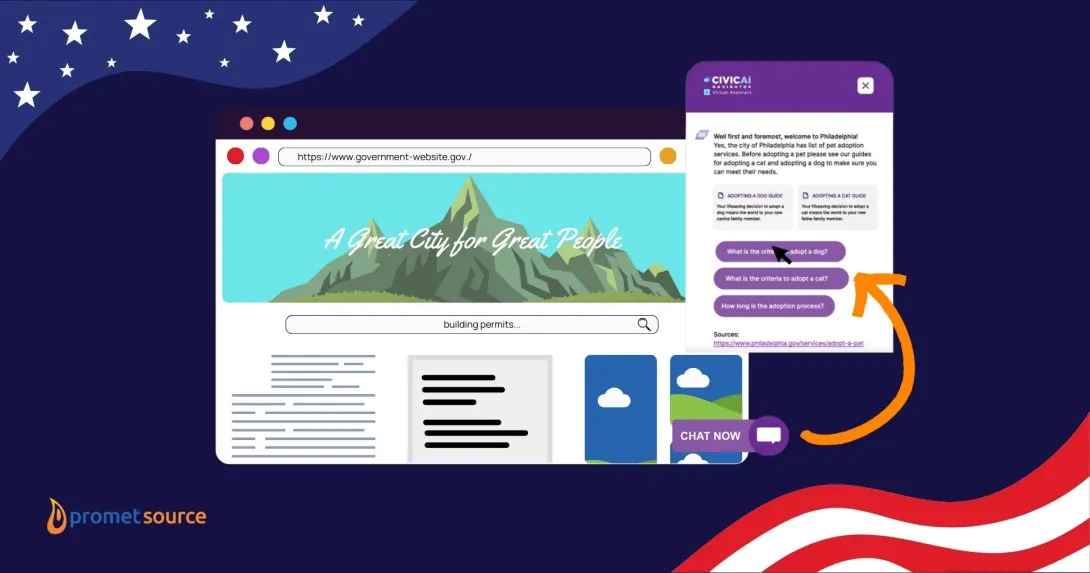The Future of SEO for Public Sector Websites
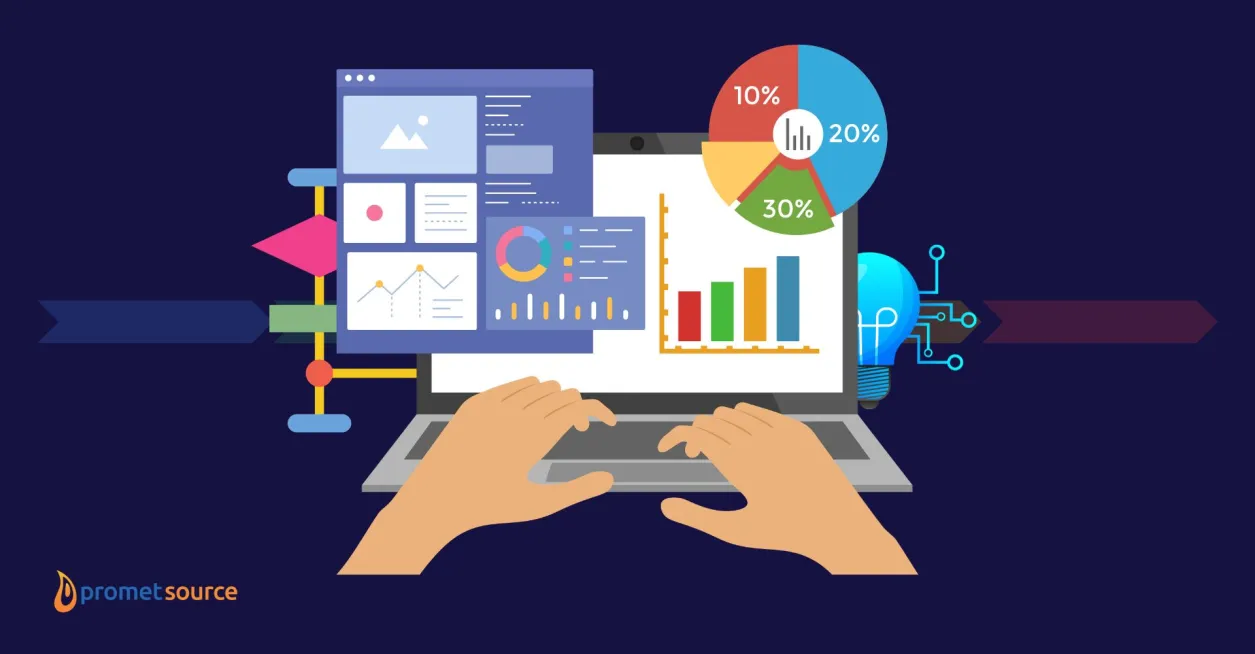
Table of Contents
Takeaway: The Search and AI landscape is changing at breakneck speed. Search engines are constantly refining their algorithms and machine learning systems, and AI is permeating every aspect of tech. Whether you agree or not with the changes we’re seeing, this shift demands a data-driven approach to SEO for government agencies and higher education institutions.
As more and more people use the internet for government services and education, SEO has become incredibly important for the public sector. Couple that with the fact that SEO is also moving at breakneck speed, just going along with common SEO best practices is not enough. This is where data-driven SEO comes in.
This shift towards data-driven SEO is particularly important for public sector websites. Unlike for-profit entities, you have unique goals and constraints. You serve diverse populations, comply with strict regulations, and operate with transparency. Data-driven SEO allows you to navigate these challenges effectively, ensuring you meet the needs of your users while optimizing your online presence.
By focusing on data analysis, you can make informed decisions based on user behavior, search trends, and performance metrics. This approach allows you to adapt quickly, maintain visibility, and serve your constituents more effectively. It goes beyond traditional SEO tactics, offering a nuanced strategy that aligns with the specific goals and constraints of government and educational websites.
Let’s talk about what the future of SEO looks like for the public sector.
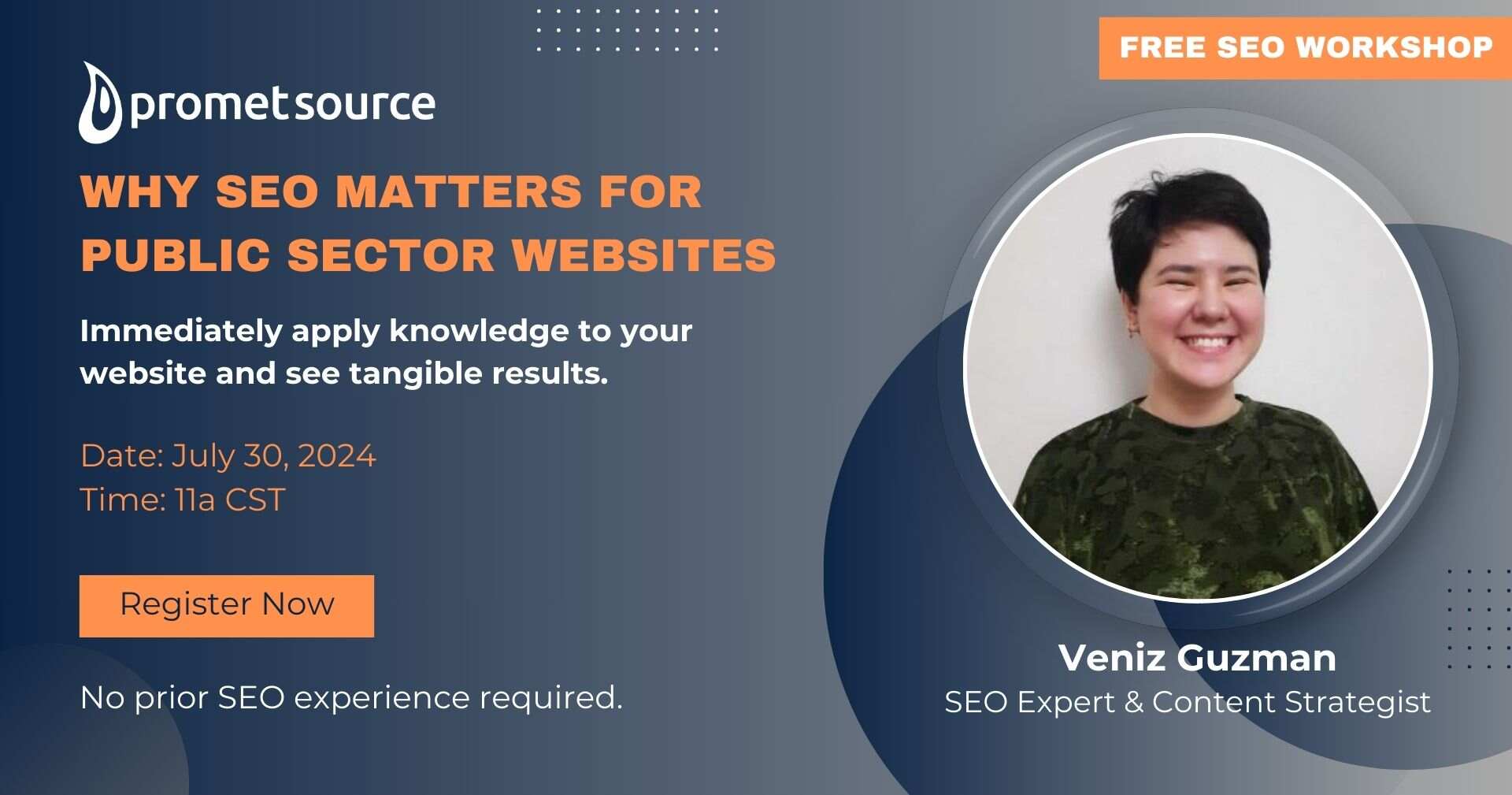
AI and machine learning
Content optimization for public sector websites is changing thanks to AI and machine learning. These technologies enable:
- Predictive content creation: AI tools can analyze vast amounts of data to predict which topics will be most relevant to users, helping agencies create timely and pertinent content.
- Personalized user experiences: AI can help tailor website content based on user behavior, enhancing engagement and satisfaction with public services. For example, the City of Barcelona's website uses AI to provide personalized content to users based on their behaviors and preferences.
- Enhanced search functionality: AI-powered search enhancements can more accurately understand the intent behind search queries, producing more relevant results based on factors such as browsing history and common intent associated with search terms.
There is still so much to learn about AI and machine learning, but we have seen just how helpful they can be. Our team here at Promet Source saw early on that these aren’t just a trend—and since our goal is to bring what’s new and next in technology to the public sector, leaning into and studying AI has been a huge part of what we do.
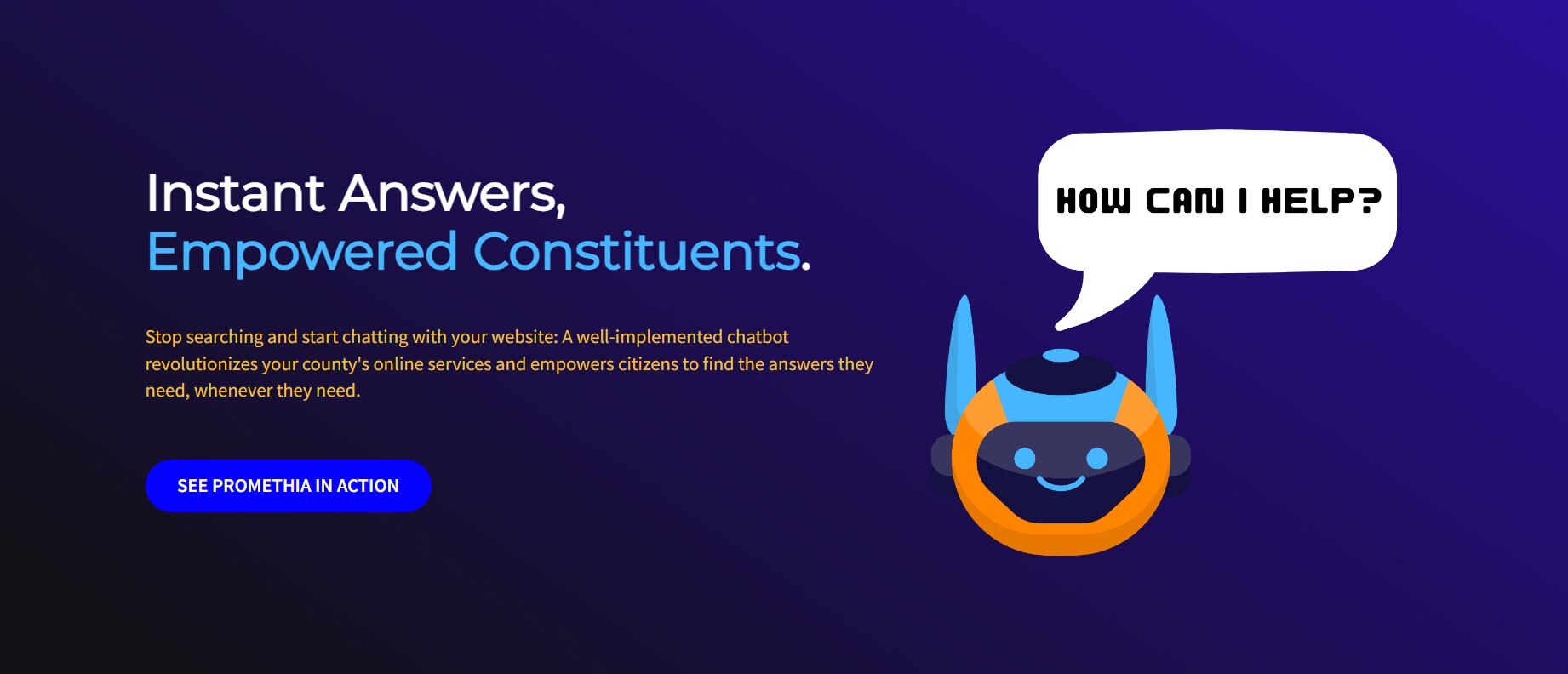
Natural language processing
Natural language processing (NLP) is transforming how citizens interact with government websites.
- Improved content readability: NLP tools (there are a lot) can analyze and optimize government content for clarity and comprehension, ensuring that complex information is accessible to all citizens.
- Multilingual support: For diverse communities, NLP facilitates more accurate translations and localization of government content, breaking down language barriers. For instance, AI-powered translation tools like the Drupal OpenAI Translation Toolbox can automatically translate website content into multiple languages.
- Chatbots and virtual assistants: NLP powers intelligent chatbots that can handle citizen inquiries, reducing the load on human staff while providing 24/7 support. The Martin County Library's "Fin" and San Jose's website chat function are prime examples of this technology in action.
- Data-driven insights: By analyzing user interactions with chatbots and search functions, government agencies can gain valuable insights into citizen needs and concerns, informing future content strategies and service improvements.
While these AI-driven trends are exciting for enhancing SEO, we still need to be smart about things. We need to carefully consider things such as accessibility, data privacy, and potential biases in AI systems to ensure these technologies properly serve your users.
Related: Government Sites Tap AI for Enhanced UX and Engagement →
Analytics for user-centric experiences
It’s not just AI affecting how we do SEO—changes in search engines are heavily affecting how we do SEO too.
With all the traffic fluctuations happening as Google and other search engines participate in the AI rat race—along with us being at the mercy of the machine learning systems and algorithms—we don’t have a choice but to go back to our best practices and test; to dig deep into our data and make sure to maximize it instead of just depending on what other experts (and Google!) have to say.
(On a related note, I did a Google API leak study to see what other experts think about that information coming to light, especially since it caused quite a panic. I suggest you check it out.)
So this is where we find ourselves: data-driven SEO, where leveraging analytics becomes crucial for creating user-centric digital experiences. By understanding user behavior and preferences, you can tailor your content and services to better meet the needs of your constituents.
Key metrics for government websites
Government websites have different goals from business websites. They should focus on metrics that reflect their unique goals and citizen needs:
- Impressions: Measures increased visibility of government web pages in Google search results.
- SERP Features: Indicates how much information you create get position zero on the SERP.
- Organic Search Traffic: Indicates how easily citizens find government services or information.
- Queries: Reveals popular search terms the site is already showing up for, helping understand citizen information needs.
- Average Engagement Time: For informational pages, indicates thorough engagement with content.
- Google Business Profile Traffic: Provides insights into local engagement.
- Form Submissions: Gauges the effectiveness of SEO in driving meaningful interactions.
- Document Downloads: Indicates the value and discoverability of informational resources.
- Core Web Vitals: Important for user experience, especially on mobile devices.
- Accessibility Scores: Measures compliance with WCAG guidelines.
- Mobile Traffic: Measures how many of your constituents access your website through their phone.
Key metrics for higher education institutions
Since public universities and colleges have different goals from governments, their key metrics will also be different:
- Organic Search Traffic: Specifically for program pages, admissions information, and financial aid resources.
- Conversions: Gauges the effectiveness of SEO in driving meaningful interactions such as inquiries, applications, visit requests, etc.
- Queries: To understand what prospective students are looking for and optimize or create content accordingly.
- Engagement Metrics:
- Average engagement time for program descriptions, admissions pages, and other key pages.
- Video views for campus tours or student testimonials.
- Core Web Vitals: Important for maintaining engagement, especially on mobile.
- Clicks: To see if prospects are finding your pages helpful right from the SERP.
- Rankings: For key terms related to specific programs, campus life, and admissions process.
- Geographic Data: To track the reach of recruitment efforts in different regions.
- Google Business Profile Traffic: Provides insights into local recruitment efforts.
- Returning Users: Indicates sustained interest from prospective students.
Using data to inform content strategy and service delivery
So let’s say you have identified your priority metrics. You can drive significant improvements in how you create and deliver content:
- Content Prioritization: Analyze popular pages and frequently searched topics to prioritize content updates and creation.
- User Journey Mapping: Use behavior flow reports to understand how citizens navigate the site, optimizing pathways to key services and information.
- Seasonal Content Planning: Identify cyclical trends in user behavior to prepare timely, relevant content (e.g., tax season information, school enrollment periods).
- Service Improvement: Analyze form submission rates, download statistics, and phone call/live agent chat rates to identify areas where digital services can be streamlined or improved.
- Local SEO: Use Google Business Profile engagement data to enhance local SEO strategies.
- Mobile Optimization: Use mobile usage statistics to check if you’re providing a seamless experience for citizens accessing services on their mobile.
- Accessibility Enhancements: Use accessibility scores to continuously improve website usability for all citizens, regardless of abilities.
- Crisis Communication Strategy: During emergencies, quickly identify rising search trends to provide timely, critical information to citizens.
To gain deeper insights, you can try:
- Heat map tracking to visualize how users interact with different parts of your website.
- Keyword alert tools to quickly identify online mentions of your organization or relevant topics.
- Custom event tracking for specific user actions important to your organization's goals.
It’s important to note that the data I suggest to track can (and probably will) change for each institution. SEO is not one-size-fits-all, it depends heavily on what goals each organization has.
For example: After recruitment season, a public university will have different goals. They will most likely look at geographic data less (if at all) and focus on other metrics, such as returning users to see how much use their current students are getting out of their website. Or they’ll start an alumni fundraising campaign and check its performance instead.
Prioritizing web accessibility as part of SEO
One thing is clear: accessibility and SEO are not separate considerations and are getting increasingly intertwined. This convergence is particularly important for the public sector, which uses public funds to serve users.
And with the DOJ updating Title II of the American Disabilities Act, ensuring we follow the latest WCAG guidelines is more important than ever.
Read: Web Accessibility FAQs →
Inclusive design equals better user experience
Yes, page experience is not the biggest ranking factor, but user interactions with your website do matter. The DOJ antitrust trial gave us a better insight into how Google algorithms and systems work, such as Glue.
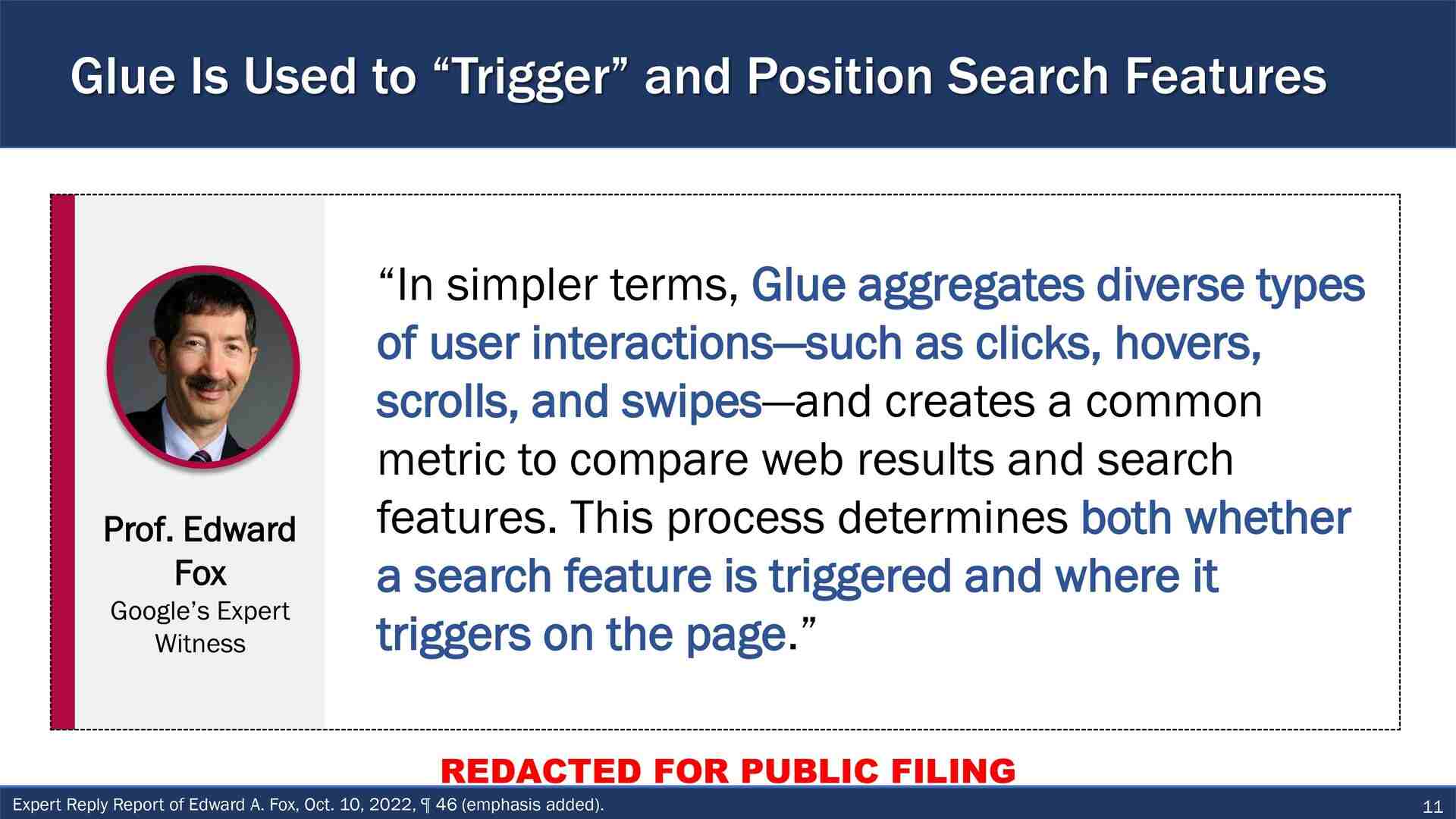
Accessibility guidelines push for well-structured, easily understandable, navigable content. This isn't just beneficial for users; it's also helpful for search engines to understand your content.
By ensuring you have an accessible website, your users will find it easier and more intuitive to navigate and use. That improved user experience naturally leads to better engagement metrics—longer time on site, lower bounce rates, etc.—user interaction data—all of which signal quality content to search engines.
Ethical AI tools are imperative
As we all increasingly adopt AI technologies (it’s clear at this point that it’s not going away), there's a growing emphasis on ethical AI that doesn't perpetuate biases. Since we’re talking about web accessibility, we need to make sure that the content generated by the AI tools does not contain biases against people with disabilities.
This is offensive, discriminatory, and terrible for user experience.
Multi-modal content improves discoverability
Providing content in multiple formats—text, audio, video, with proper transcriptions and descriptions—is a key accessibility practice. It's also a powerful SEO strategy. It allows your content to be discoverable through various search verticals (web, video, image searches) and caters to different user preferences, expanding your reach and engagement potential.
Mobile optimization is non-negotiable
Accessibility and mobile optimization go hand in hand. Google finished migrating us all to mobile-first indexing last July 5, 2024, so any website that can’t get crawled by the Google Smartphone crawler won’t get indexed at all.
So, if your website is accessible to your constituents through mobile, then great! The next question becomes: Can they use it properly, without hindrance? Does your website have missing pages, clickable items too close together, or other reasons why users with difficulty accessing desktop devices can’t use your site?
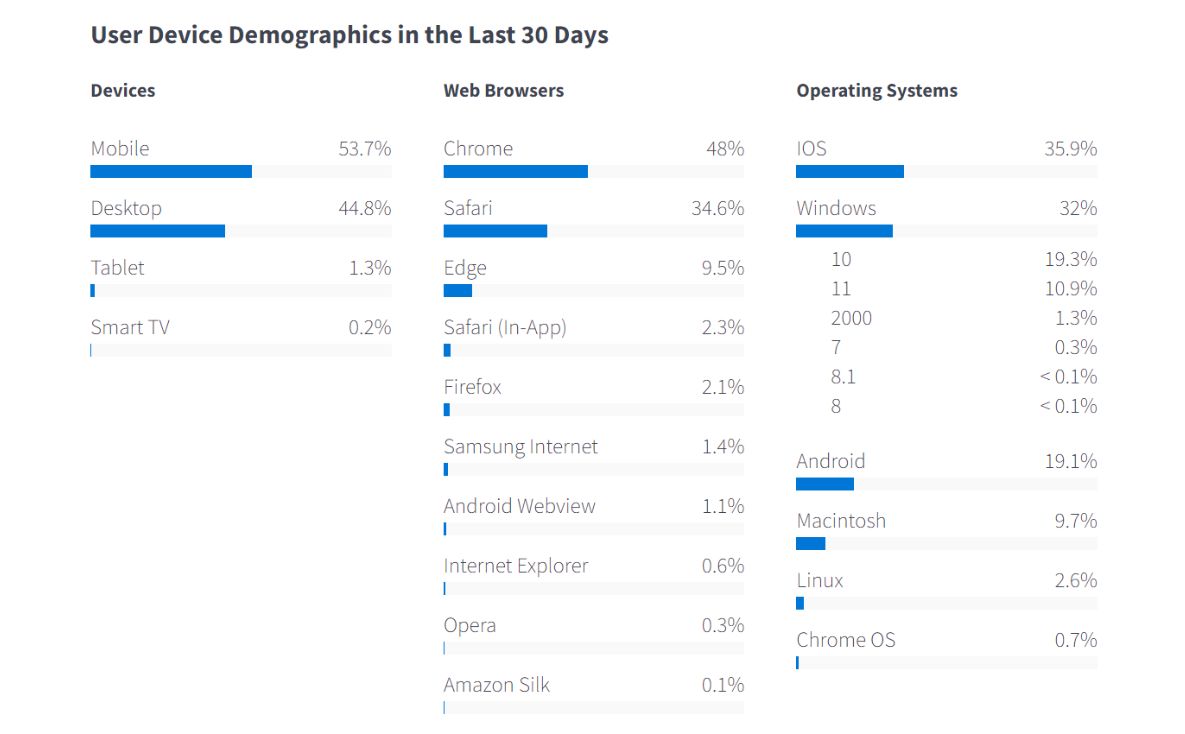
As we can see, 53.7% of Federal websites are mobile users. There really is no excuse to not optimize your website for mobile since it will help out your users who are heavily dependent on or simply prefer to use their phones.
As Search continues to evolve, websites that are truly accessible—functioning well across all devices and connection speeds—will have a significant advantage in search rankings.
Google has a useful best practices guide on mobile optimization.
Zero-click searches
There’s a reason why impressions, not clicks, are what we track for government websites. According to the latest Sparktoro study, nearly 60% of searches ended without a click (meaning they got what they needed from the SERP).
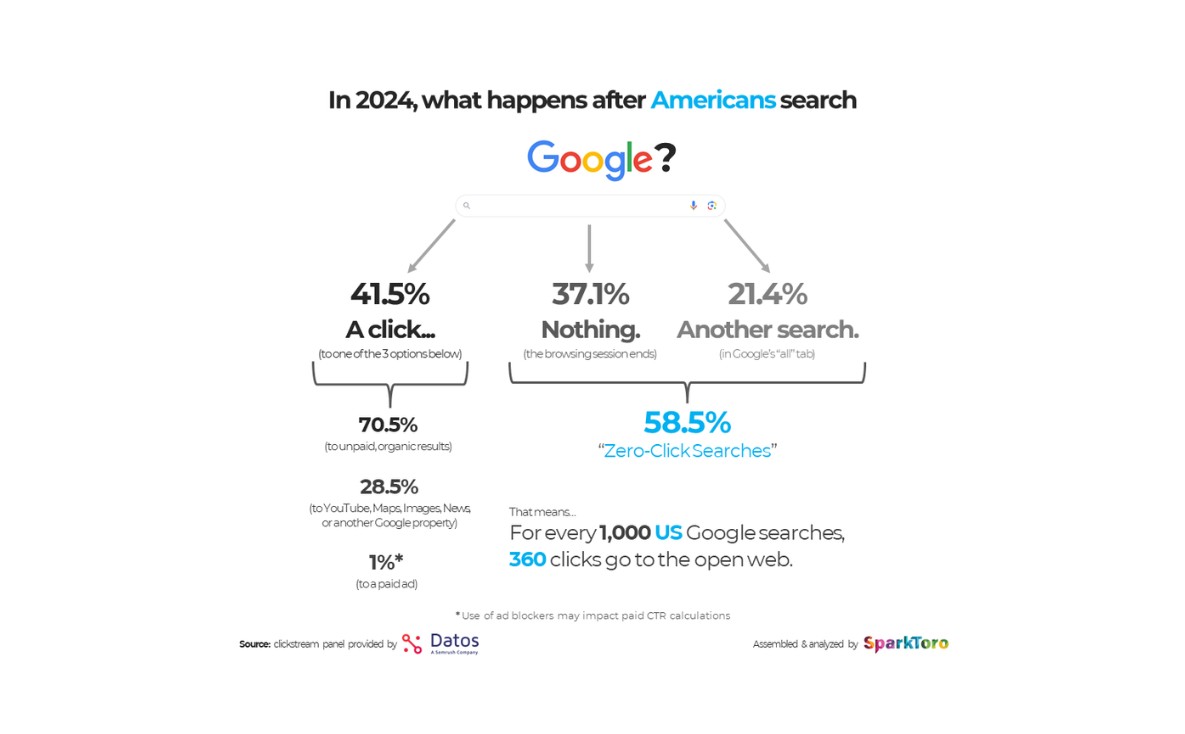
If you’re handling a government website, this may not be an issue since one of your goals is to provide information as quickly as possible. However, this means your SEO strategy needs to explicitly incorporate tactics to get SERP features.
Featured snippets, knowledge panels, and (potentially) AI Overviews for government info will become critical battlegrounds since they serve as prime real estate for delivering authoritative information quickly to citizens.
This means:
- Crafting clear, concise answers to both common and uncommon questions.
- Using structured data markup correctly and extensively.
- Continuously updating information to maintain accuracy.
The ability to secure these prominent positions will become a key indicator of SEO success, as they will help establish your website as the go-to source for official information.
- Overall, the future of SEO for public sector websites in light of these developments will require:
- A shift towards optimizing for visibility and information delivery within Google's ecosystem, not just for clicks to the website.
- An increased focus on structured, authoritative, and easily digestible content that can be quickly understood by both users and AI systems.
- The skill to balance comprehensive information with concise, direct answers to queries.
- Continued emphasis on accessibility and mobile optimization.
- Regular monitoring and testing (again, data-driven SEO).
Ethical considerations
Since we increasingly rely on complex algorithms and AI to optimize website and search functions, there's a risk of creating "black boxes" users can't understand or scrutinize.
The future of ethical SEO in the public sector will demand transparency. This could involve publishing explanations of how AI-powered search works on your website, clearly labeling AI-generated content, and providing your users with options to view non-personalized search results.
And as mentioned earlier in the accessibility section, AI can perpetuate existing biases. Public sector SEO strategies of the future must prioritize safeguarding from this risk, and that includes partnering with vendors who have strong AI ethics.
Preparing for future changes
The future of SEO for public sector websites is dynamic and complex. Proactivity and adaptability is the name of the game. Here are some key action steps for you to take:
- Embrace data-driven decision-making: Regularly analyze your website metrics to inform your SEO strategy. Best practices are great guides, but as I like to say, SEO is dependent on who you are (organizational identity) and what you want to accomplish (organizational goals). Let your data guide you.
- Prioritize user experience: Focus on creating and structuring content that truly serves your users' needs. Use analytics to understand what information your constituents are seeking most.
- Stay on top of AI and NLP developments: These technologies are reshaping SEO and tech. Understand how they can be applied to improve your website's performance and user experience.
- Optimize for zero-click searches: With more searches ending on the results page, ensure your content is structured to appear in featured snippets, knowledge panels, and even the AI Overviews.
- Make accessibility a cornerstone of your SEO strategy: Accessibility isn't just about compliance; it's increasingly important for SEO performance.
- Keep mobile optimization at the forefront: Your website should be easy to use not just with a desktop, but with mobile too. Ensure your site performs well on all devices.
- Be transparent about your AI practices: Build trust with your users by being open about how you're using these technologies.
Hunkering down and taking the time to analyze how users are interacting with your website, along with keeping up with SEO and tech developments, can go a long way in helping you future-proof your SEO strategy.
Lead the way to a better public sector website
I wrote a guide on SEO for government websites that recently got featured by Search Advocate John Mueller in the July Google Search Central episode. This is what he had to say:
Next up, Veniz created a guide to SEO for government websites. It's a bit niche; I know, not everyone runs a government agency website. However, all of you probably know some government agencies that could make a better website, and you could send them this link.
The future of SEO for public sector websites is both exciting and challenging. The developments we’re seeing will not slow down anytime soon, and user behavior will continue to adapt, so we have to adapt as well.
The road ahead may seem daunting, but you don't have to walk it alone. We’re hosting a series of events about the future of SEO for the public sector. The first is our upcoming workshop, "Why SEO Matters for Public Sector Websites," which is designed to equip you with applicable knowledge, tools, and techniques you need to begin adapting in this rapidly changing field.

Slots are limited for this workshop, so register now and take the first step toward transforming your public sector website into a model of digital excellence. Your constituents—and your search rankings—will thank you.
Get our newsletter
Get weekly Drupal and AI technology advancement news, pro tips, ideas, insights, and more.

